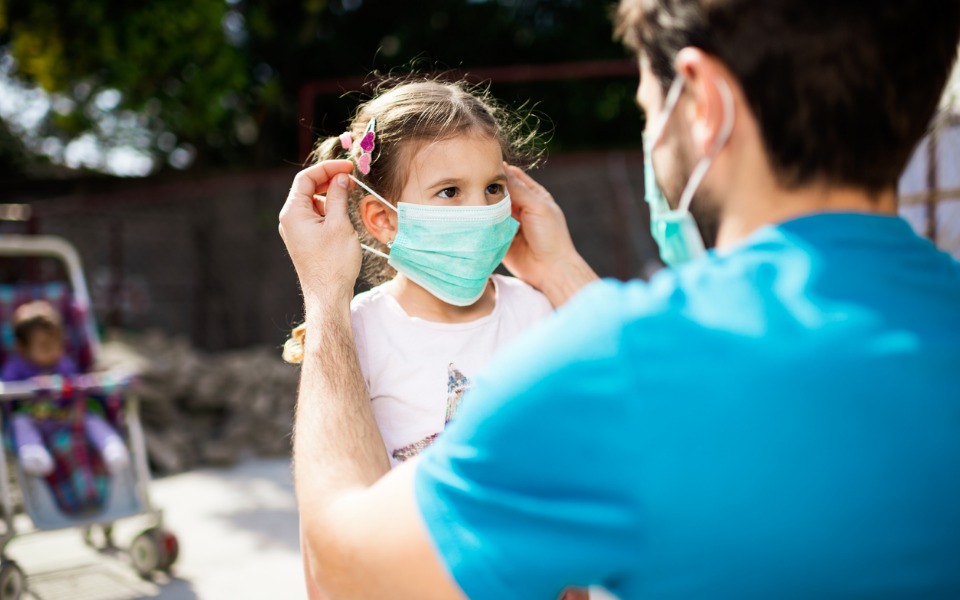
From being disregarded, the story of how face masks became significant
It has not been happy wearing facemasks. When the world woke up to the novel coronavirus early this year, there was no concerted and organised effort or campaign to underscore their need or relevance.

It has not been happy wearing face masks. When the world woke up to the novel coronavirus early this year, there was no concerted and organised effort or campaign to underscore their need or relevance.
This is indeed surprising, because only about a hundred years ago, face masks were widely used during the influenza pandemic, otherwise called the ‘Spanish Flu’. The hindsight, it seems, has offered little or no benefit.
It took almost two months into the pandemic for people to think and talk about face masks. The world woke up to its importance in March 2020. Since then, however, its use has gone through at least four phases. The first was toward the end of March 2020 when the World Health Organization downplayed the need or importance of wearing them. Then, it said that only those who are sick or caring for those sick with COVID-19 should wear masks. It explicitly stated that people not wear face masks in public places. To be fair, it feared that the widespread wearing of masks might lead to mask shortage for medical workers and create a false sense of security among the public.
The US Centers for Disease Control and Prevention (CDC) concurred with the WHO’s advice. Deposing before the House Foreign Affairs Committee in February, when asked if healthy people should wear masks, its Director Robert Redfield answered, “No.”
It was also during March that India declared a lockdown. Prime Minister Narendra Modi’s speech to the nation on March 24 invoked the phrase ‘stay at home’ 12 times (“do just one thing – stay inside your home” for 21 days), but did not refer to face masks. Nor did President Trump’s address to the nation on March 11. The oft-promoted behaviour then was to cover the face and and mouth if you sneeze or cough. Except for WHO’s specific advice, face masks had not gained salience until the end of March. Given this benign neglect, let us call this ‘The Selective Use of Facemasks’ phase.
The second phase came almost immediately in early April. On April 3, the CDC reversed its guidance and advised Americans to wear non-N-95 masks or face cloths in places where it is difficult to maintain social distance. Three days later, on April 6, the WHO Director General during media briefing said, “… countries could consider using masks in communities where other measures such as cleaning hands and physical distancing are harder to achieve.”
Meanwhile, understanding of the virus’ behaviour grew. It became clear that there is asymptomatic and pre-symptomatic transmission of COVID-19. Public health experts began to speak about individuals spreading the virus before realizing they were sick. This realisation prompted wearing of the masks in public. The awakening phase nudged people to use face masks or face coverings to help prevent an infected person from spreading the virus.
The mandatory use phase followed soon. Cases began to climb and deaths increased. A few cities declared lockdowns while others issued stay-at-home instructions. As local and state governments began to issue advisories and impose rules, people were outraged. Placards proclaiming “I will not comply” appeared. Face mask use became embroiled in bitter controversy mainly because wearing it was made mandatory.
Some authors pointed out that the evidence in favour of face mask use was based on observational studies, not randomised control design. Others said the evidence itself is not convincing. On the other side of the aisle, researchers produced evidence about reduction in number of cases and deaths when people wore face masks.
‘To wear or to not wear’ seesaw debate is reminiscent of a similar controversy surrounding the Influenza pandemic of 1918-19. That the pandemic coincided with World War I was bad enough. What made it worse was the absence of drugs or vaccines and people’s resistance to wearing masks – the resistance was so high that some newspapers called it, ‘mask rage’. The opposition to not wearing face masks was equally fierce. Those who refused to wear were labelled ‘mask slackers’.
The moot question is why people do not wear masks. Is it that masks embody a deeper cultural value? After all, societies that oppose face masks are vociferous about veils that cover the face. Such societies accept, even glamorise nudity. Openness is their hallmark and mask somehow challenges the norm.
One of Hofstede’s cultural dimensions relates to individualism-collectivism. Individualism-oriented societies value personal independence and autonomy over group membership. Such societies, predominantly in the West, tend not to wear face masks.
Several commentators have therefore brought up issues of personal freedom and civil liberties to explain face mask-avoidance behaviour. Hofstede identifies countries such as US, Australia and Great Britain as individualistic and Singapore, Hong Kong and Mexico as collectivistic. When it comes to facemasks, countries in the West have reacted differently to it from countries in the East. Obviously, what is good for the goose is not good for the gander.
The fourth and final phase, the promotional phase, ended August 14. A host of organisations and networks joined hands to organise the World Mask Week. The Pandemic Action Network, WHO, CDC, the Africa CDC, the Federation of American Scientists (FAS), and over 40 others partnered to celebrate the World Mask Week. Its purpose: Wear face coverings in public.
(Pradeep Krishnatray is former director, Research and Strategic Planning, Johns Hopkins Center for Communication Programs, New Delhi)

